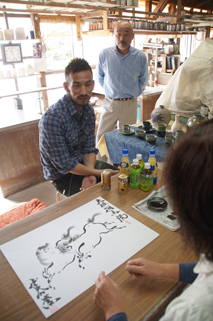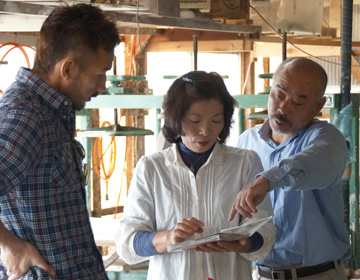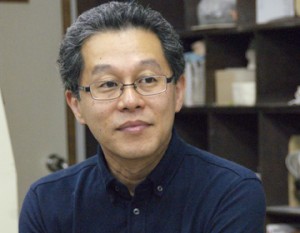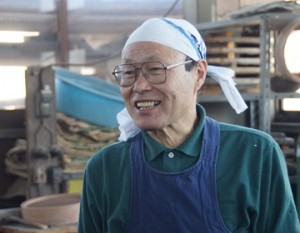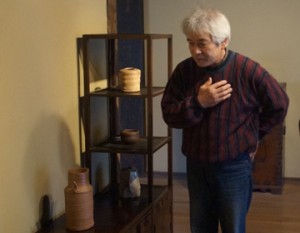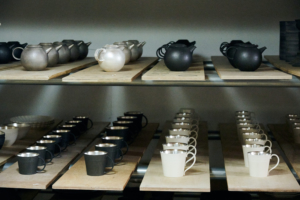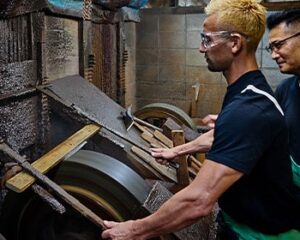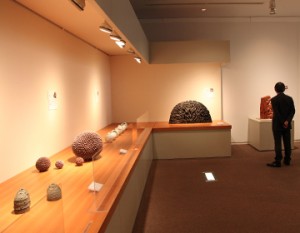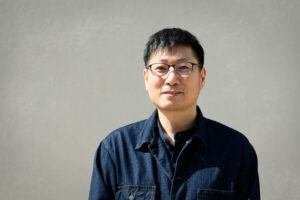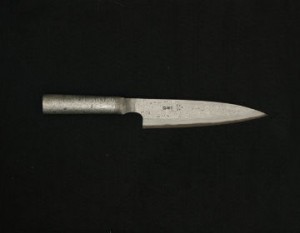“Obori Somayaki”, a Namie tradition
”Obori Somayaki” is a form of pottery that is made in the Obori area in Namie machi, Fukushima Prefecture. The history of this style started in the Edo era, during the Genroku years, when Kyukai Hangai from the Soma clan discovered good pottery clay and began making pottery for daily use. Techniques such as ”Aohibi”, ”Hashiriuma” and ”Niju yaki” all have a history extending more than 320 years.
Images of running horses are used as the design for Obori Soma ware for several reasons. There is a Shinto ritual called ”Soma Nomaoi” which has been conducted for more than 1060 years and continues to this day. The image of a hitched horse was also a family crest of the Soma clan lord. In addition, ”Obori Somayaki” has been promoted as a product representing the clan.
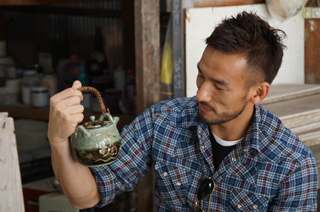
Characteristics of “Obori Somayaki”
The characteristic of ”Obori Somayaki” pieces is the blue color and cracks which are a result of the adjustment in iron. Ink is rubbed into the cracks turning it black, so the black cracks are in contrast with the blue, giving it a distinct look. Another significant characteristic is a technique called ”niju yaki”. The outside and inside pieces are made separately then combined before baking. This dual layer structure keeps the contents warm. This technique is only used only in ”Obori Soma” ware.
Having to leave the kiln behind after the natural disaster
We interviewed Teishin Hangai, the 16th master of Obori Somayaki Hangai Kiln. As his name implies, he is the direct descendant of Kyukai Hangai who started ”Obori Somayaki”. The workshop had a history of more than 300 years, but the climbing kiln was totally demolished in the Great East Japan Earthquake. They also had to evacuate due to the nuclear power plant accident that followed.
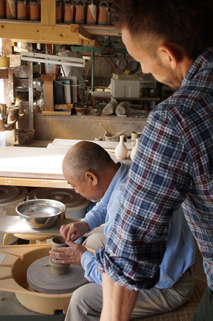
Sounds echo throughout the kiln
Hangai has moved from one shelter to another within FUkushima, but with support from his acquaintances, he has been able to continue his work in a workshop in Fukushima city. He misses Namie now that he had to leave it behind. This was true not only for Hangai, but for all the people who had to be evacuated.
”Everyone says they want something from home. Because it makes them feel safe and secure.” Hangai told us. The land, people and the traditional ”kogei”, ”Obori Somayaki” were all connected.
Hangai said ”I wanted you to hear this.”, as he opened the door to the kiln. We heard a beautiful sound, ”peen! peen!”. It sounded metallic, but it was actually the sound of the cracks forming as the pottery cooled. Nakata couldn’t help himself from exclaiming ”Amazing! What a beautiful sound!” and took in the sound. This sound must also be connected to people’s emotions.
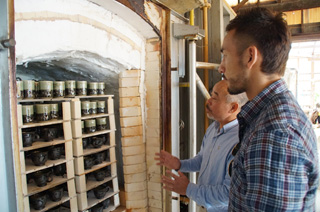
Drawing horses
Nakata had the opportunity to draw the horse unique to ”Obori Somayaki”. Nakata drew the horse with direction from Haggai’s wife who was in charge of painting.
When we asked ”Are there any rules when drawing?”, she answered, ”There is a stroke order when drawing the horses. It’s more difficult to draw on pottery ware than on paper.”
Nakata concentrated on his drawing, but found it difficult. He laughed ”It looks like a fat horse.”
Hangai and his wife continue to make ”Obori Somayaki” ware.
He told us, ”Many people encouraged us. ‘You have ”skill”. If you have skill, your customers will always follow you.’ Those words made us happy more than anything.”.
